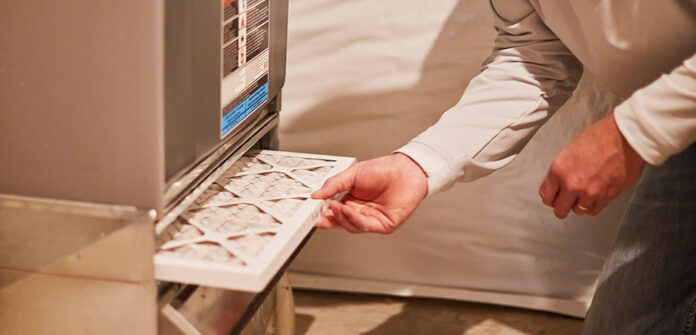Moving into a new house is an exciting time. But it can also come with a steep learning curve.
From the moment you get the keys, you’ll start to discover what makes your home unique – including the many systems that make it function.
As you familiarize yourself with the ins and outs of a new space, it helps to start with the basics. Because, let’s be honest: The best time to find your water shut-off valve is before your first leak – not after.
Here are 15 essential things you should know about in your new house:
- Electric panels. Knowing the location of your home’s electric box will quickly pay off the first time you trip a breaker. Typically, electric panels are located in a basement, garage, or utility closet. After finding them, familiarize yourself with the design of your breaker box. Know how to turn off the primary circuit and individual breakers. If the breakers aren’t labeled, take some time to turn each circuit off and correctly label the areas of your home they power.
- Water shut-off valve. Whether you need to replace a leaky faucet or prevent a burst pipe from flooding your home, you must know how to quickly turn off the water supply. You’ll need to locate the shut-off valve connected to the main water line entering your home to do this. If your home has a basement, check for the shut-off along one of the outside walls. If your home has no basement, check for the water shut-off at ground level near your hot water tank. After you find it, ensure everyone in your home knows where the shut-off is located in case of a plumbing emergency.
Because things like sewer and drain backup or flooding can happen anytime and can be expensive, consider adding Extended Water coverage. It protects you if you have damage from floods caused by natural disasters and other causes of loss, such as water backup from sewers or drains. - Gas shut-off valve. Depending on your home’s configuration, some appliances may be fueled by natural gas – including your water heater, fireplace, furnace, oven, dryer, and more. Local building codes typically require every natural gas fixture to have its shut-off valve. But in case of a gas leak, you should also know how to turn off the main gas supply in your home. In most cases, your main gas shut-off valve will be located outside the home near the gas meter (it may also require the use of a wrench). And remember: natural gas leaks can be deadly. So if you suspect a gas leak in your home, call 911 and evacuate the area immediately.
- Dryer vent. Did you know clothes dryers cause roughly 15,500 home structure fires, 29 deaths, 400 injuries, and $192 million in direct property loss annually? To help protect your home from dryer fires, regularly clean the lint from your dryer and vent. To clean your dryer vent, locate where it exits the house. This will likely be on an outside wall near your laundry room. But depending on your home’s design, the dryer could also vent through the roof. Then, use a dryer vent cleaning kit (available at any home improvement store) to remove any trapped lint. And make sure the vent isn’t obstructed from the outside.
- Sewer or septic lines. Nobody likes thinking about the wastewater system in their home. If you ever experience a significant plumbing issue, it helps to know where the key components of your sewer or septic system are located. If your home is connected to a city sewer system, find where your main sewer line exits the home and check for a cleanout valve. If you have an older home and the sewer cleanout isn’t serviceable, consider getting it replaced as preventative maintenance. If you have a septic system, you’ll also want to know where your tank access points are located and any inspection ports.
- Well location. If your home isn’t connected to a city water supply, make sure you know the location of your well. Depending on your home’s design, the well may be located indoors in a crawlspace or basement. If you can’t find it inside, look for signs of a well cap, casing or pit in your yard. Knowing the location and general design of your well system can help expedite repairs if part of your system begins to leak or fail.
- Meter locations. Each utility service will have its own meter to measure your home’s gas, electric, and water use. After locating these meters, keep the area around them clear and easily accessible.
- Furnace filters. A clean furnace filter not only improves the air quality of your home – it also helps your furnace run more efficiently. Depending on the design of your furnace, experts recommend replacing the filter every 30 to 90 days. Note the location and size of your furnace filters, then pick up a few replacements on hand.
- Crawlspace and attic access. Every attic and crawlspace is different. Some may provide access to utilities and appliances, while others are just space. Either way, it helps to know how you can access each area of your home – just in case. It’s also helpful if you hear little feet running around up there and need to check your attic for squirrels or rodents
- Sprinkler system. Does your new home have a sprinkler or irrigation system? If so, take the time to understand how it works. This includes learning to set the timers, shut off the system, and winterize the pipes to prevent freeze damage.
- Smoke alarms. Ensure you have at least one smoke alarm on every level of your home. Then test them regularly to confirm the batteries work. You may also want to check the expiration date (smoke detectors should be replaced every 10 years). If you have young children, let them hear the sound of an alarm in advance. This will help them recognize the sound during an actual emergency.
- Property lines. After you buy a new home, please familiarize yourself with its exact property lines. You can use a metal detector to find the stakes buried at your property lines or get a surveyor to mark the lines for you. Not only will this help you decide where to install your fence or landscaping, but it can also prevent potential property disputes with your neighbors.
- Sump pump. Failing sump pumps are a notorious cause of home flooding. To ensure your sump pump works correctly, test it a few times yearly. You can pour water into the sump pit until the pump kicks on. To protect against damage caused by a failing sump pump, you want to consider adding an insurance policy.
- Gutters and downspouts. Poor drainage can be a common cause of wet basements. Help direct rainwater away from your home’s foundation by inspecting your gutters and downspouts. Ensure the gutters are clear and test any underground drains with a garden hose to check for clogs. If water starts backing up, you’ll want to clear the lines or redirect your downspouts away from home.
- Fireplace. If your home has a gas or wood-burning fireplace, familiarize yourself with its design. Learn how to operate the damper (it should be open when using the fireplace and closed at all other times). The Chimney Safety Institute of America also recommends that your chimney be inspected yearly to protect against fire and carbon monoxide risks.
- Flexible Gas Lines. Some appliances may be fueled by natural gas – including your water heater, fireplace, furnace, oven, dryer, and more. Flexible gas lines need to be bonded. The permanent bonding of a non-arc-resistant flexible gas piping system directly to the grounding electrode system of the structure in which the gas line is installed serves to lower the voltage build-up on the gas line caused by unintentional energizing from outside sources such as lightning strikes. Have an electrician verify that proper bonding is in place, and if not, have them correct the potentially hazardous system. And remember: natural gas leaks can be deadly. So if you suspect a gas leak in your home, call 911 and evacuate the area immediately.




